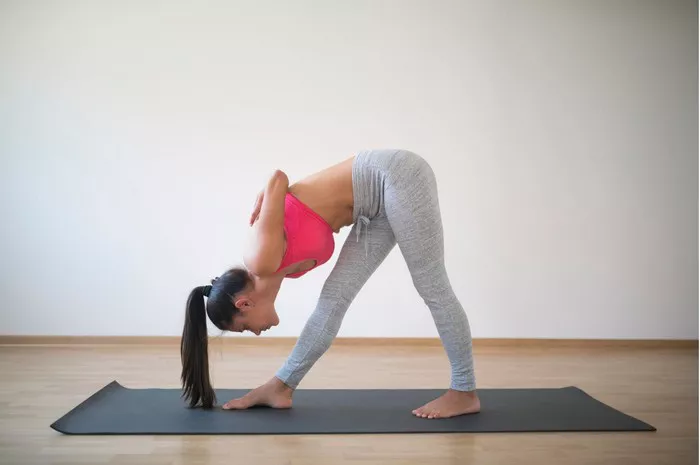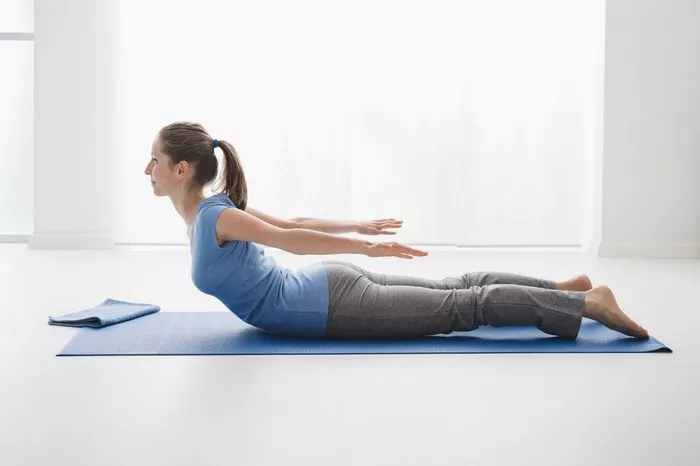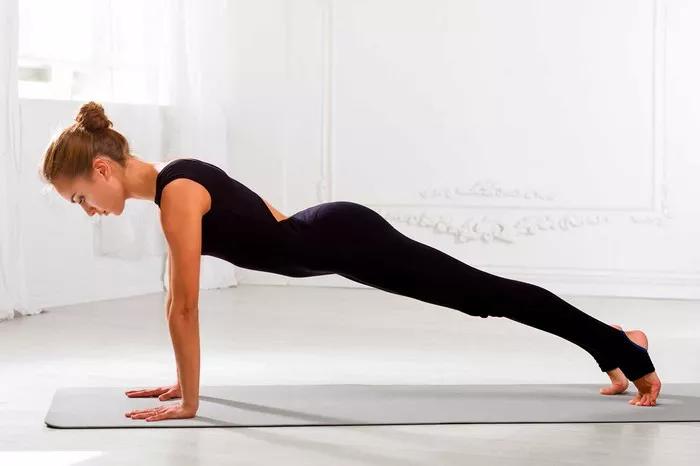Camel pose, known as Ustrasana in Sanskrit, is a powerful backbend that opens the chest, stretches the front of the body, and strengthens the back muscles. It is one of the most beneficial yoga poses for improving flexibility and posture, while also enhancing energy flow throughout the body. However, for beginners, this pose may seem intimidating, especially because it involves deep spinal extension and flexibility. With proper guidance and practice, anyone can learn to perform the camel pose safely and effectively.
In this article, we will break down the camel pose for beginners, explain its benefits, and offer practical tips to ensure you get the most out of this pose while avoiding injury. Whether you’re a complete beginner or someone with some yoga experience, this step-by-step guide will help you approach Ustrasana with confidence.
What is Camel Pose?
The camel pose is a kneeling backbend that involves opening the chest and stretching the entire front body. The pose can be seen as a heart-opening posture, helping to increase flexibility in the spine, shoulders, and hips. The camel pose also stimulates the digestive system and can provide a deep emotional release.
The term Ustrasana comes from the Sanskrit words ustra (camel) and asana (pose), as the final posture resembles the shape of a camel with its curved back and head tilted backward.
Benefits of Camel Pose
Before we dive into the step-by-step instructions, it’s important to understand the many benefits that Ustrasana offers. Here are some key advantages of practicing camel pose regularly:
Improves Spinal Flexibility: Camel pose deepens the natural curve of the spine, helping to increase mobility in the thoracic and lumbar regions.
Strengthens the Back and Core Muscles: The pose requires the engagement of the back and core muscles to support the spine in the backbend.
Opens the Chest: By stretching the chest and shoulders, Ustrasana helps to counteract the effects of poor posture from sitting at desks or looking at screens.
Stimulates the Digestive System: The deep stretching of the abdomen can help with digestion and alleviate symptoms of bloating and constipation.
Relieves Tension and Stress: Like most backbends, camel pose can help relieve tension in the body and promote a sense of emotional release.
Enhances Energy Flow: As a heart-opening posture, Ustrasana is said to increase energy and vitality, leaving practitioners feeling revitalized.
Contraindications and Precautions
While camel pose is highly beneficial, it is not recommended for everyone, especially beginners who have certain physical conditions. Here are some precautions to consider before practicing Ustrasana:
Neck Issues: If you have neck problems or cervical spine injuries, avoid tilting your head back too far in the pose. Focus on keeping your neck in a neutral position.
Lower Back Pain: If you suffer from lower back pain or injury, it’s essential to practice camel pose under the guidance of an experienced instructor, as backbends can aggravate lower back conditions if done incorrectly.
Knee or Hip Injuries: Since Ustrasana requires kneeling, people with knee or hip injuries should avoid this pose or modify it by using props like blocks or cushions for support.
Pregnancy: Pregnant women should avoid backbends, especially deep ones, during their pregnancy, as they can cause strain on the abdomen and lower back.
Always listen to your body, and if you’re unsure about your ability to perform this pose, consult a yoga teacher or healthcare professional.
Preparing for Camel Pose
Before attempting camel pose, it’s important to warm up your body properly. Since camel pose is a backbend, your spine, hips, shoulders, and chest need to be open and flexible to safely enter the pose.
Recommended Warm-Up Poses:
Cat-Cow Stretch (Marjaryasana-Bitilasana): This dynamic stretch helps to increase flexibility in the spine and prepares the body for deeper backbends.
Downward-Facing Dog (Adho Mukha Svanasana): A great way to stretch the back, legs, and shoulders while preparing for the backbend.
Child’s Pose (Balasana): This resting pose helps to release tension in the back and hips.
Bridge Pose (Setu Bandhasana): This gentle backbend strengthens the back and hips and opens the chest.
Shoulder Rolls and Arm Circles: To prepare the shoulders for the deep opening needed in camel pose, try doing some shoulder rolls and gentle arm circles.
Step-by-Step Guide to Performing Camel Pose
Now that you’re warmed up, let’s go through the steps for performing camel pose, focusing on the correct alignment and modifications for beginners.
Step 1: Begin in a Kneeling Position
Start by kneeling on the floor with your knees about hip-width apart. Your thighs should be perpendicular to the floor, and your toes should point straight behind you. Make sure your shins are pressing into the ground, and that you feel stable and balanced.
Tip for beginners: If you find it difficult to sit comfortably on your knees, you can place a folded blanket or cushion under your knees for additional support.
Step 2: Engage Your Core and Lift Your Chest
Draw your belly button in toward your spine to engage your core. Keep your pelvis slightly tucked to prevent overarching your lower back. Reach your arms forward and bring your palms to rest on your lower back, with your fingers pointing down. This hand position will provide support as you begin to lean backward.
Tip for beginners: You can start by simply practicing the motion of arching your upper back and lifting your chest without going into a full backbend.
Step 3: Begin the Backbend
Slowly begin to lean your upper body backward, lifting your chest toward the ceiling. As you do this, avoid collapsing your lower back. Keep your thighs and hips pressing forward while opening up your chest and shoulders.
Tip for beginners: Don’t force your body into a deep backbend right away. Start by gently arching your back, and increase the depth of the backbend as your flexibility improves.
Step 4: Reach for Your Heels (Optional)
If you feel stable and comfortable, you can reach one hand at a time to your heels. Keep your core engaged and be mindful of not overextending your back. If you cannot reach your heels initially, that’s okay. You can place your hands on your lower back for support or use blocks under your hands for added height.
Tip for beginners: If reaching your heels feels too intense, keep your hands on your lower back or thighs for support. Focus on opening your chest rather than forcing your hands to the heels.
Step 5: Hold the Pose and Breathe
Once you are in the full expression of camel pose, focus on breathing deeply and steadily. Try to maintain a steady and calm breath, allowing the chest to open further with each inhale. Hold the pose for 20-30 seconds or longer if you feel comfortable. As you hold the pose, engage your thighs and core muscles to keep your pelvis stable and prevent overextension of the lower back.
Step 6: Exit the Pose Slowly
To come out of the pose, slowly and carefully lift your torso back up, bringing your hands back to your lower back for support. Avoid collapsing your back abruptly. Rest your hands on your thighs and take a few deep breaths to relax your body.
Tip for beginners: You may feel a deep stretch or slight discomfort in the lower back when coming out of the pose. Move slowly and with control to avoid any strain.
Modifications and Variations for Beginners
For beginners, it’s important to approach camel pose with patience and awareness. If you find the full pose too challenging, there are several modifications you can try to build strength and flexibility over time:
Use Blocks or Cushions: If you have difficulty reaching your heels, place blocks under your hands or hips to reduce the intensity of the backbend.
Hands on Hips: Instead of reaching for your heels, keep your hands on your hips to support your lower back and focus on the chest opening.
Use a Wall for Support: Stand facing a wall and perform the pose with your hands on the wall for support, especially if you are struggling to balance.
Half Camel Pose: Instead of reaching for your heels, keep your hands on your lower back or thighs, and work on lifting your chest without going into a deep backbend.
Common Mistakes to Avoid
When practicing camel pose, there are a few common mistakes to watch out for:
Overarching the Lower Back: A deep backbend requires flexibility in the thoracic and lumbar spine. Make sure to engage your core and avoid putting unnecessary pressure on your lower back.
Collapsing the Chest: Keep your chest open and lifted throughout the pose. Do not let your shoulders droop forward.
Forcing the Hands to the Heels: Reaching for the heels should come naturally over time, so don’t force it. Instead, focus on a gradual, controlled backbend.
Neglecting the Hips: Keep your hips moving forward as you lean backward to protect your lower back and avoid arching it too much.
Conclusion
Camel pose (Ustrasana) is a transformative yoga posture that offers a wide range of benefits, including improved spinal flexibility, chest opening, and back strengthening. For beginners, it’s important to approach this pose with patience, mindfulness, and proper alignment. By following the step-by-step instructions in this guide and using modifications where necessary, you can safely and effectively practice camel pose while avoiding injury.
Remember, backbends like Ustrasana require a combination of strength, flexibility, and awareness. With consistent practice, you will gradually build the flexibility in your spine and hips needed to perform the pose more deeply and comfortably. Always listen to your body, and over time, camel pose will become an incredibly rewarding addition to your yoga practice.
Related Topics:























